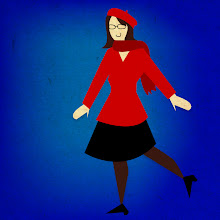The Decode exhibition shows some of the latest developments in digital and interactive design, using for example flux of information’s, binary codes or digital data from the networks in conjunction to cutting edge technology to create interactive artworks or evolving visual representations of immaterial data.
Decode is fascinating on many levels.
Watching the exhibition through the eyes of a communication professional opens many doors. Some of the pieces may seem pointless, but they are as many experiments on what the future of digital design will be, on the technologies available and, as importantly, of the ways we can use them.
Also, many of the more interactive pieces of the exhibition are a joy to play with, and observing people reactions to them is almost as interesting as the artworks themselves. Just watching younger (as well as not so young) children go at them gives a fair overview of the most effective interactive pieces: the ones that make them move, jump, play with the feedback the artwork gives them in ways the artist may not have expected.
I noticed that the most popular artworks seemed to be mainly those with the most interactive feedback, but also those that were the most physically engaging. Here are three of my favourites:
Fabrica’s Venetian Mirror, a mirror sending back staggered, slowly imprinting black and white reflections, much like an old silver film camera. Unlike most of the other artworks of the show it has a slow process, questioning both time and the image of self. It forces to hold a pose, but even then various subjects may gradually overlay, creating strange compositions and a slowly evolving stream of time.
Ross Phillips’s Videogrid is exactly what the name says: a twenty screen grid showing 3 second-long loops of footage of the visitors of the exhibitions who can film themselves with a webcam. Each new loop replaces another, and the Videogrid is a jerky, self-rewriting testimonial of the people that were there. If the proclivity of people in filming themselves didn’t surprise me, I was amazed at how playful people were in front of the camera, not hesitating to do stupid stuff when the Videogrid could be seen by everyone in the exhibition.
Mehmet Akten’s Body Paint allows visitor to throw colourful bursts of paint to a wall via a motion sensor, the colour and the quantity of paint depending of the amplitude of body movements. I found it fun, good for the soul and strangely addicting.

No comments:
Post a Comment